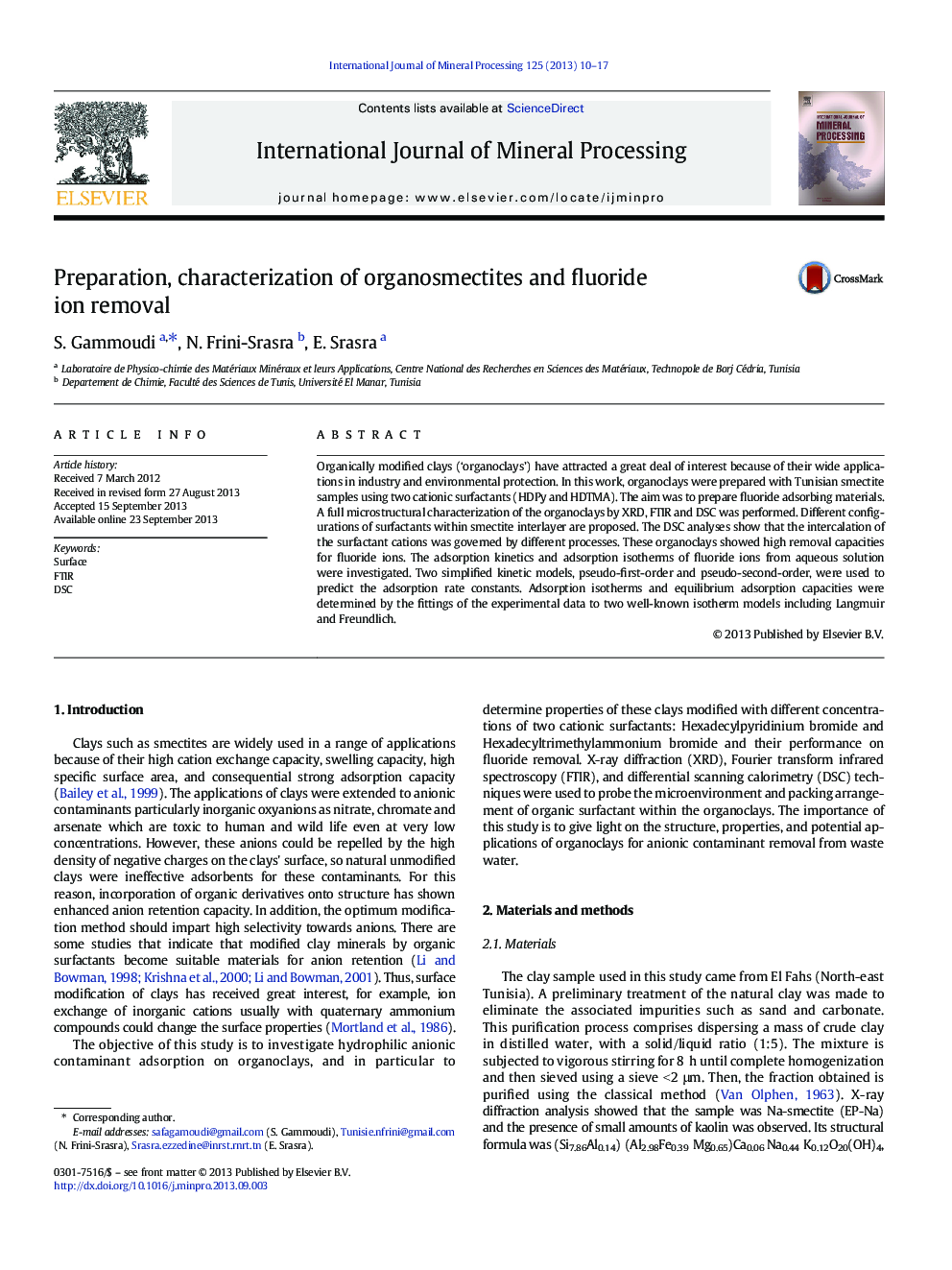| Article ID | Journal | Published Year | Pages | File Type |
|---|---|---|---|---|
| 213981 | International Journal of Mineral Processing | 2013 | 8 Pages |
•Intercalation of two cationic surfactants into sodium-smectite.•Surface modification of smectite clays by surfactants offers an easy method of adsorbing large amounts of fluoride.•Modeling results using two models suggest that different mechanisms may be involved in fluoride fixation.
Organically modified clays (‘organoclays’) have attracted a great deal of interest because of their wide applications in industry and environmental protection. In this work, organoclays were prepared with Tunisian smectite samples using two cationic surfactants (HDPy and HDTMA). The aim was to prepare fluoride adsorbing materials. A full microstructural characterization of the organoclays by XRD, FTIR and DSC was performed. Different configurations of surfactants within smectite interlayer are proposed. The DSC analyses show that the intercalation of the surfactant cations was governed by different processes. These organoclays showed high removal capacities for fluoride ions. The adsorption kinetics and adsorption isotherms of fluoride ions from aqueous solution were investigated. Two simplified kinetic models, pseudo-first-order and pseudo-second-order, were used to predict the adsorption rate constants. Adsorption isotherms and equilibrium adsorption capacities were determined by the fittings of the experimental data to two well-known isotherm models including Langmuir and Freundlich.
Graphical abstractSorption of fluoride on organoclays.Figure optionsDownload full-size imageDownload as PowerPoint slide
